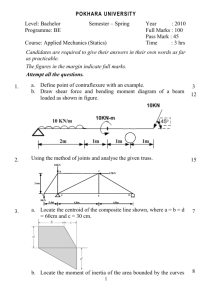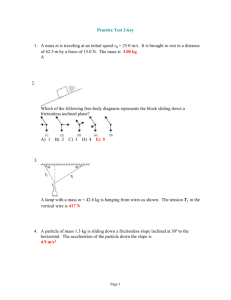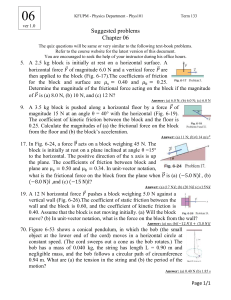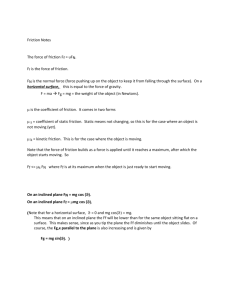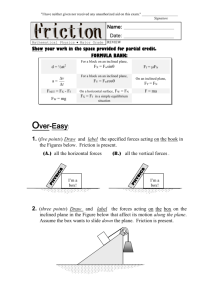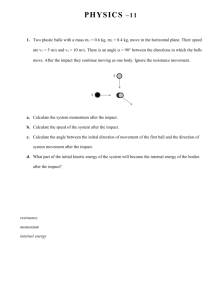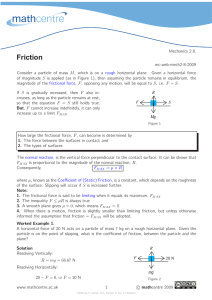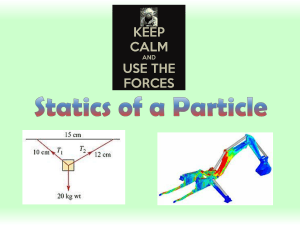3. Friction
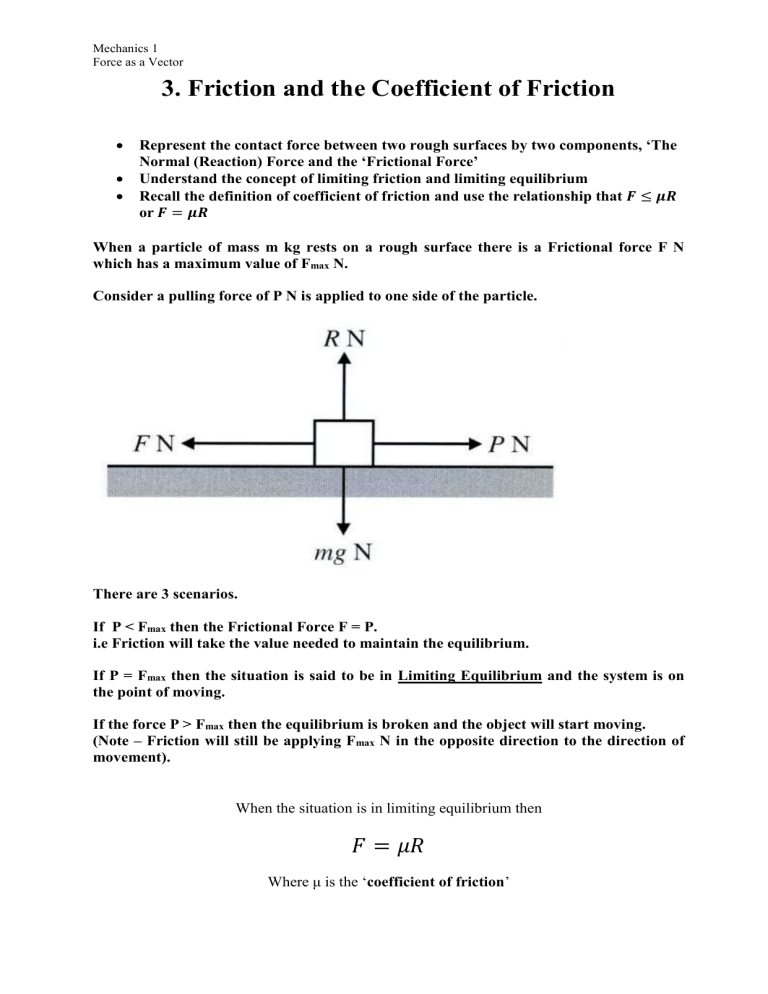
Mechanics 1
Force as a Vector
3. Friction and the Coefficient of Friction
Represent the contact force between two rough surfaces by two components, ‘The
Normal (Reaction) Force and the ‘Frictional Force’
Understand the concept of limiting friction and limiting equilibrium
Recall the definition of coefficient of friction and use the relationship that 𝑭 ≤ 𝝁𝑹 or 𝑭 = 𝝁𝑹
When a particle of mass m kg rests on a rough surface there is a Frictional force F N which has a maximum value of F max
N.
Consider a pulling force of P N is applied to one side of the particle.
There are 3 scenarios.
If P < F max
then the Frictional Force F = P. i.e Friction will take the value needed to maintain the equilibrium.
If P = F max
then the situation is said to be in Limiting Equilibrium and the system is on the point of moving.
If the force P > F max
then the equilibrium is broken and the object will start moving.
(Note – Friction will still be applying F max
N in the opposite direction to the direction of movement).
When the situation is in limiting equilibrium then
𝐹 = 𝜇𝑅
Where μ is the ‘ coefficient of friction
’
Example 1
A car of mass 1000kg is being pulled along a rough horizontal surface by a rope, at a constant speed.
The tension in the rope is 5000 N and the rope is inclined at an angle of 15 degrees above the horizontal.
Find
1.
The Normal Reaction force
2.
The least value of the coefficient of friction needed to maintain equilibrium.
(Although moving it is in equilibrium as it is not accelerating or decelerating – which would happen if the forces were not in equilibrium)
2
Forces on an inclined plane
If a particle is on an inclined plane then, instead of resolving horizontally and vertically, resolve parallel to the plane and perpendicular to the plane.
Here a partical P has a mass, m kg. A normal Reaction force R and a Frictional force stopping it sliding of F r
Draw all the forces on the diagram, resolving these parallel and perpendicular to the plane.
3
Example 2
A particle of mass 4 kg rests on a smooth plane inclined at 30 degrees to the horizontal. A force of P Newtons acts on the particle up the plane along the line of greatest slope. Find the magnitude of the reaction force and the magnitude of the force P.
4
Example 3
A particle of mass 5kg rests on a rough plane inclined at θ degrees to the horizontal, where sin θ = 0.6. The particle is kept in equilibrium by a horizontal force of 40N.
The particle is on the point of slipping up the plane.
Find
(a) The force exerted by the plane on the particle
(b) The coefficient of friction
(c) How the force diagram would change if the particle was on the verge of slipping down the plane.
5
